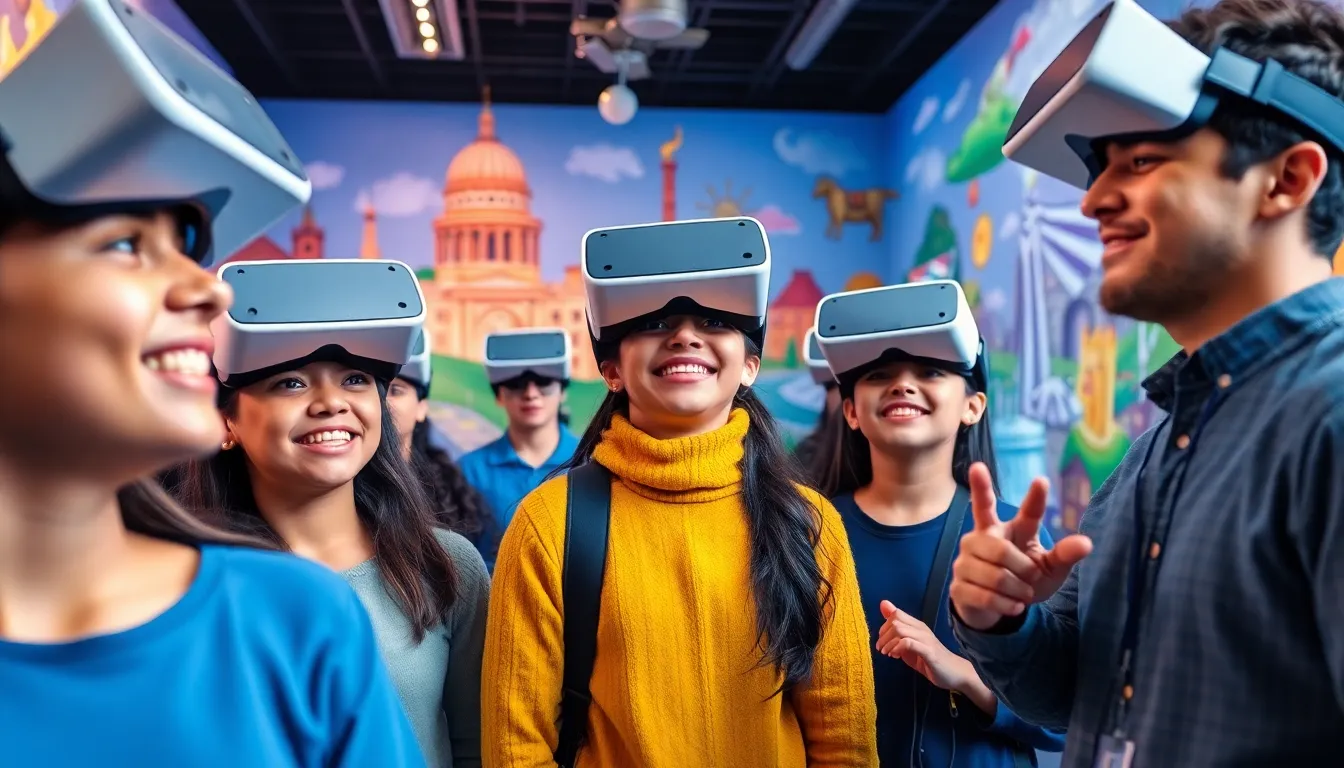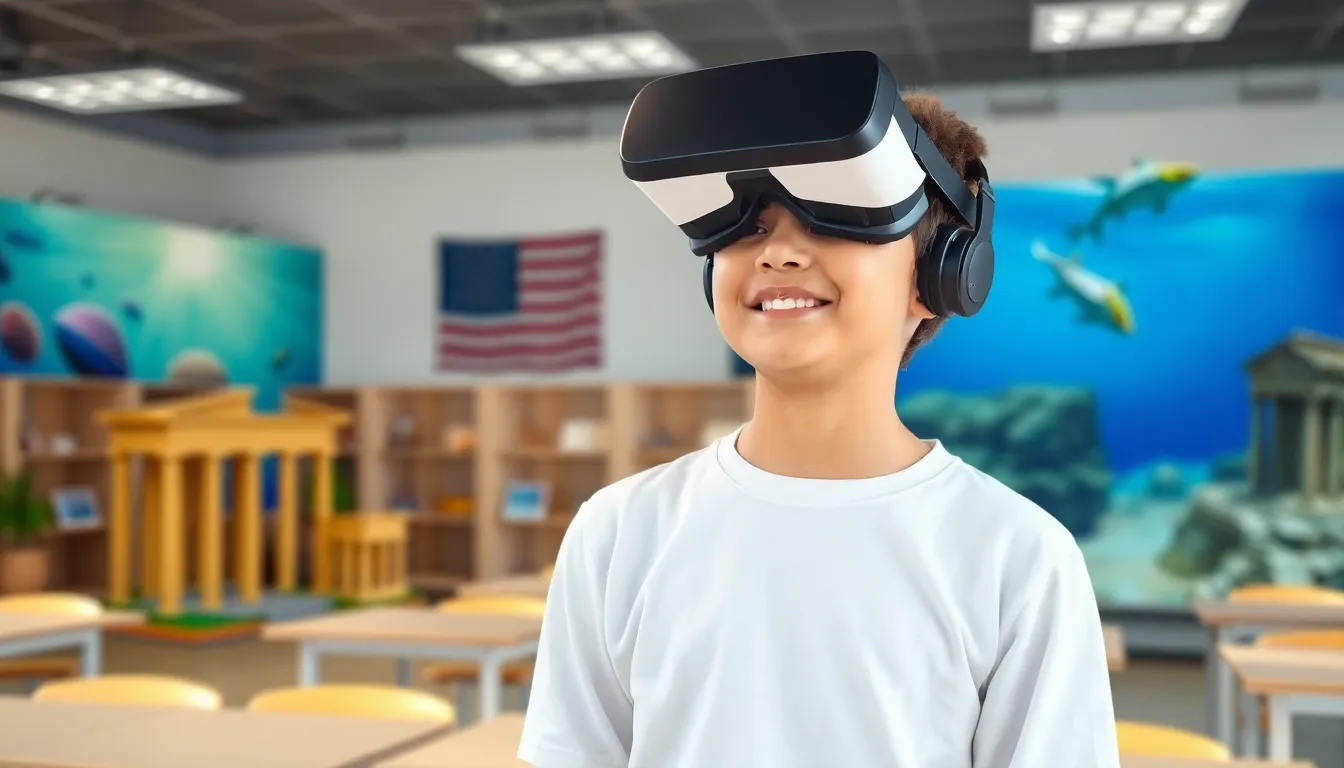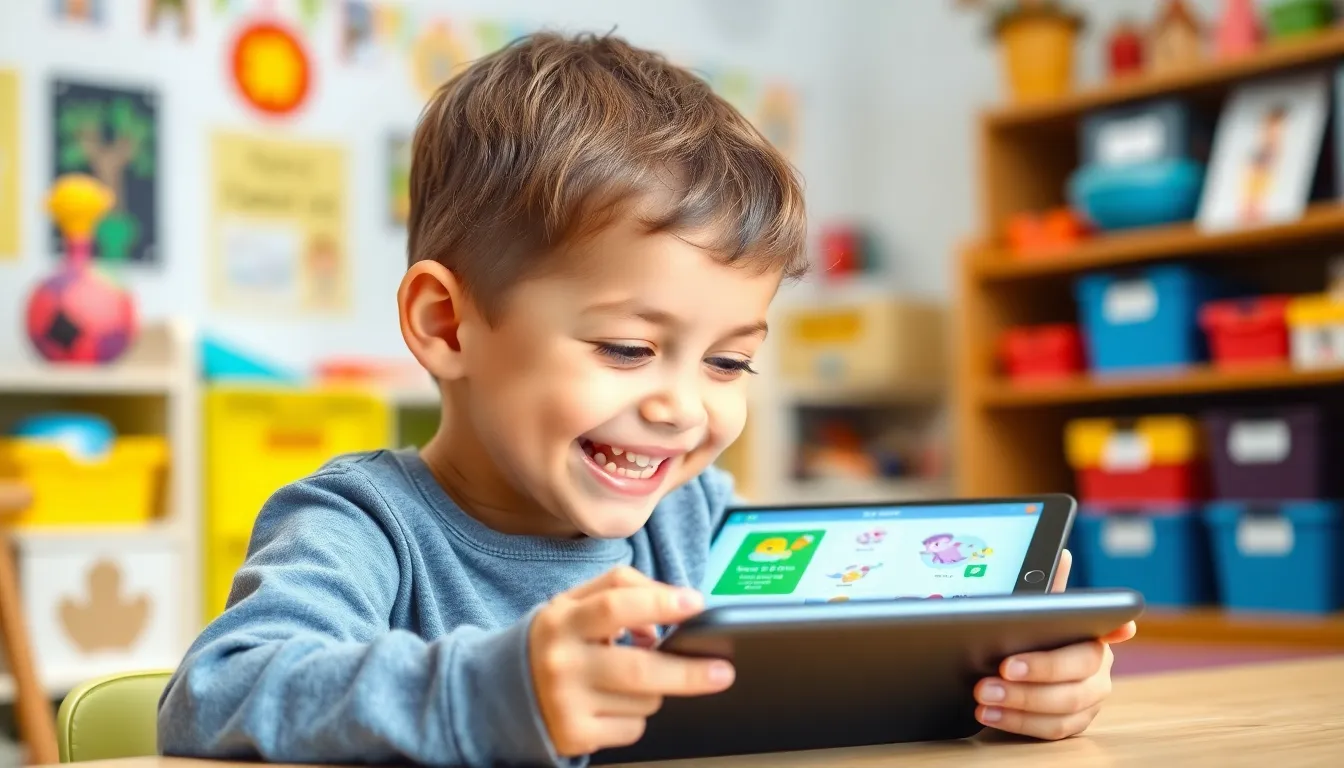Imagine diving into the depths of the ocean without getting your feet wet or exploring ancient ruins while still in your pajamas. Educational VR apps are revolutionizing the way students learn, making education not just informative but downright thrilling. These immersive experiences transport learners to places they’ve only dreamed of, turning textbooks into interactive adventures.
With the power of virtual reality, complex subjects become engaging and accessible. Whether it’s walking alongside dinosaurs or solving math problems in a virtual space station, these apps spark curiosity and enhance retention. So why settle for mundane lessons when you can embark on a journey that’s both fun and educational? Get ready to discover how these innovative tools are reshaping classrooms and igniting a passion for learning like never before.
Table of Contents
ToggleOverview of Educational VR Apps
Educational VR apps provide immersive learning experiences that captivate students’ attention. These applications range from simulations of historical events to explorations of scientific concepts. Many platforms offer interactive lessons that allow users to engage with material in a hands-on manner, which enhances knowledge retention.
Specific subjects benefit from VR technology. In biology, for example, students can virtually dissect organisms. History lessons come alive as learners walk through ancient cities or witness significant moments. Geography focuses on global exploration, allowing learners to traverse different landscapes and cultures.
Accessibility plays a crucial role in the popularity of these technologies. Students can access virtual environments through affordable devices, making rich educational content available to diverse demographics. Studies show that students using VR apps exhibit increased motivation and engagement in their learning processes.
User feedback often highlights the unique enjoyment of learning through VR. Gamification elements, such as rewards for completing tasks or challenges, amplify the excitement of educational activities. Teachers observe that these tools often result in deeper discussions and critical thinking among students.
Research indicates that educational VR apps can bridge gaps in traditional teaching methods. In subjects often perceived as dull, the engaging nature of VR can spark interest. By incorporating these tools, educators can foster a positive learning environment and encourage exploration beyond the classroom.
Educational VR apps revolutionize the learning landscape. Their ability to transform abstract concepts into tangible experiences leads to more profound understanding and appreciation of various subjects. With the ongoing development of new applications, the future of education continues to expand.
Benefits of Educational VR Apps

Educational VR apps offer numerous advantages that enhance the learning experience. They engage learners by immersing them in captivating environments and interactive scenarios, allowing for exploration and discovery.
Enhanced Engagement
VR technology promotes active participation in learning activities. Students get to interact with 3D models of historical artifacts or complex anatomical structures. They experience simulations that bring subjects to life, facilitating a deeper understanding of the material. Various apps incorporate gaming elements, making learning fun and motivating students to explore further. Social learning occurs when learners collaborate in virtual spaces, discussing and solving problems together. Increased engagement through these immersive experiences leads to enthusiasm for learning, transforming mundane lessons into exciting adventures.
Improved Retention
Retention rates improve significantly with the use of VR in education. Research shows that students remember information better when they experience it in a 3D environment. Active participation strengthens memory encoding, making abstract concepts more tangible. Visualizations of scientific processes or historical events create connections that enhance understanding. Students articulate learned concepts with greater confidence, resulting from their hands-on experiences. The ability to revisit virtual environments allows for review, reinforcing knowledge over time. This effective method of learning ensures that educational insights remain with students long after the experience ends.
Popular Educational VR Apps
Educational VR apps transform learning by immersing students in interactive environments. These applications engage learners more effectively than traditional tools.
App 1: Features and Use Cases
ClassVR provides versatile features that enhance learning experiences. This app offers a library filled with content across subjects like biology, history, and geography. Teachers can easily create custom lessons using 3D models and simulations. For example, students can explore ancient ruins or virtually dissect organisms in a lab setting. User feedback highlights improved engagement during lessons. Many educators note that students retain information better when immersed in these vivid scenarios. ClassVR facilitates collaboration through group activities, fostering teamwork among learners.
App 2: Features and Use Cases
Google Expeditions showcases the benefits of virtual field trips. This app enables users to explore stunning locations without traveling. Available tours cover a wide range of topics, such as natural wonders and historical landmarks. Students can participate in guided tours led by educators, improving comprehension of complex concepts. Features include the ability to view environments from different angles and interact with objects. Educators praise the app for enhancing student curiosity and motivation. Many classrooms utilize Google Expeditions to enrich discussions and bring learning to life, captivating student interest effectively.
How to Choose the Right Educational VR App
Selecting the right educational VR app involves several key considerations. Assess the subject matter first. Many apps focus on specific topics such as biology, history, or geography, and aligning the app’s content with educational goals is essential.
Next, evaluate user engagement features. Look for apps that incorporate interactive elements, allowing students to participate actively. Apps with gamification features can elevate learning experiences and motivate learners.
Check compatibility with devices. Ensure the chosen app works on the available VR hardware. Popular educational VR apps like ClassVR and Google Expeditions offer diverse content and support various devices, making them accessible to more students.
Explore the library of content within each app. A wide variety of resources can enhance lessons, covering different subjects and learning styles. Educators appreciate custom lesson creation in apps such as ClassVR, allowing for tailored experiences based on classroom needs.
Seek user reviews and feedback from educators. Insights from teachers and students can highlight practical benefits and shortcomings. A solid reputation often indicates the app’s effectiveness in enhancing engagement and retention.
Consider the cost of the apps. Some options provide free trials or low-cost subscriptions. Weigh the budget against potential benefits to determine overall value.
Finally, test the app before finalizing the decision. A hands-on experience can reveal usability and functionality. Observing how students interact with the app offers valuable insights into its potential impact on their learning journey.
Future Trends in Educational VR
In the coming years, educational VR apps are set to evolve significantly. User personalization will become a focal point, enabling tailored learning experiences based on individual progress and preferences. Adaptive learning algorithms can adjust content difficulty to meet each learner’s needs, creating an optimal educational journey.
Increased integration of artificial intelligence (AI) promises enhanced interactivity within VR environments. AI can facilitate realistic simulations, allowing students to engage in more meaningful interactions during lessons. Real-time feedback mechanisms will also improve, providing students with immediate assessments of their understanding.
Collaboration features are likely to expand, enabling students from different locations to immerse themselves in shared virtual experiences. Group projects and discussions within VR environments can foster teamwork and deepen comprehension of complex topics. Such collaborative settings also encourage diverse perspectives in learning.
Cross-disciplinary applications will gain traction, merging subjects like history and science in immersive formats. Immersive storytelling can bring historical events to life while illustrating their scientific principles simultaneously, enhancing engagement across multiple subjects. Such blended approaches can spark curiosity and broaden students’ understanding.
Furthermore, accessibility advancements will play a crucial role in widening the reach of educational VR. Affordable devices and increased internet access can help underrepresented communities benefit from these innovations. Schools are likely to adopt VR into their curricula more widely, making learning experiences more equitable.
Research will continue to highlight the cognitive benefits of educational VR. Studies may show increased retention rates and improved critical thinking skills resulting from immersive learning experiences. These insights can further validate the effectiveness of educational VR in enhancing student achievements.
Educational VR apps are reshaping how students engage with learning materials. By providing immersive experiences that make complex subjects accessible and engaging, these tools foster curiosity and enhance retention. As technology advances and becomes more affordable, a broader range of students can benefit from these innovative educational resources.
The positive feedback from users and educators alike underscores the effectiveness of VR in promoting deeper understanding and collaboration. With ongoing advancements in personalization and interactivity, the future of educational VR looks promising. These applications not only make learning more enjoyable but also empower students to explore and understand the world around them in ways that traditional methods simply can’t match.








